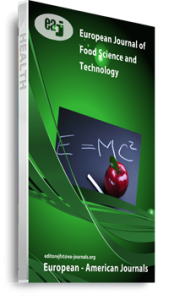Concentration Effect on activity of emulsion (EA) and stability of emulsion (ES) of the various samples was investigated. Emulsifying Activity (EA) of raw (native/ control) and germinated Dark-ash Solojo Cowpea (FFDAS, DFDAS, FFBS and DFBS flours; DAS and BS protein isolate) were all concentration dependent. The 6h DFDAS flour and raw DAS isolate both had the emulsifying activity increasing up to 2% w/v before initial fall of activity with increase in concentration. FFDAS Raw, 24 h, 48 h and 72 h; DFDAS 24 h, 48 h, 72 h; FFBS 6 h, 24 h, 48 h, 72 h; DFBS 6 h; 24 h; DAS 48 h; BS 36 h, 48 h and 72 h all had their EA increasing with rise in concentration up to 4%w/v; while FFDAS 36 h; DFDAS Raw, 36 h; FFBS Raw, 36 h; DFBS 36 h, 48 h, 72 h; DAS 6 h, 36 h; BS Raw, 6 h and 24 h germinated flour and protein isolates went up to 6% w/v before additional rise in concentration brought about a decrease in value. Only DAS 24 h germinated protein isolate gave a rise of up to 8% w/v before decline in emulsifying activity took place. The values of the emulsifying activity ranged between 42.45±2.54 and 49.30±0.96%; 43.48±4.35 and 47.68±0.37%; 43.75±0.55 and 60.57±2.10%; 44.37±1.57 and 47.74±0.36%; 41.36±3.66 and 78.26±4.35%; 42.22±2.41 and 67.26±1.96%, for FFDAS, DFDAS, FFBS, DFBS, DAS and BS respectively. The increase in EA with germination shows increased solubility. Germination caused the exposure of the functional groups inside the protein matrix due to the unfolding of the protein matrix and this brought about increased synergy at the protein oil interface. Protein being a surface-active agent is capable of quickly moving to the oil – water point of linking where it is adsorbed to create a shielding membrane via intermolecular interaction. The solubility of the protein in the aqueous phase makes this possible. Once protein quantity is small, protein adhesion at the oil–water border is by moving from area of high concentration to low concentration (Diffusion controlled). Decrease in emulsifying activity was observed among DFBS Raw, DAS 72 h, and FFDAS 6 h up to 2%, 4% and 8% respectively. Germination was observed to improve EA of the Solojo flours and isolates. Varietal difference was also observed in the effect of germination on EA, FFBS was found to have a higher EA than FFDAS. The isolate had the DAS having a better EA than the BS. This could be due to the degree of uncoiling of the protein molecule and also the quantity of hydrophilic and non-polar constituent on the interface of the molecule. The foaming capacity (FC) for FFDAS increased with germination except at lower concentration of 2-4%. That of DFDAS showed a better response. The FC was higher than that of the FFDAS, this could be as a result of the exposure of more hydrophilic sights as a result of defatting. The DFBS likewise exhibited a higher FC compared to that of FFBS. The FC of the flours of brown solojo was found to be higher than that of the dark-ash solojo cowpea. The high foaming capacity (FC) at highly acidic and alkaline pH was probably as a result of the rise in total charge on the protein, bringing about the lowering of the non-polar inter- actions but increasing protein pliability, making the protein to disperse speedily to the junction between air and water enclosing particles of air thereby encouraging formation of foam. This observation proved the authenticity that foaming property depends on protein solubility.
Keywords: Nutraceuticals, Nutritional composition, Solojo Cowpea, Under-utilized legumes, essential amino acids, food industry

